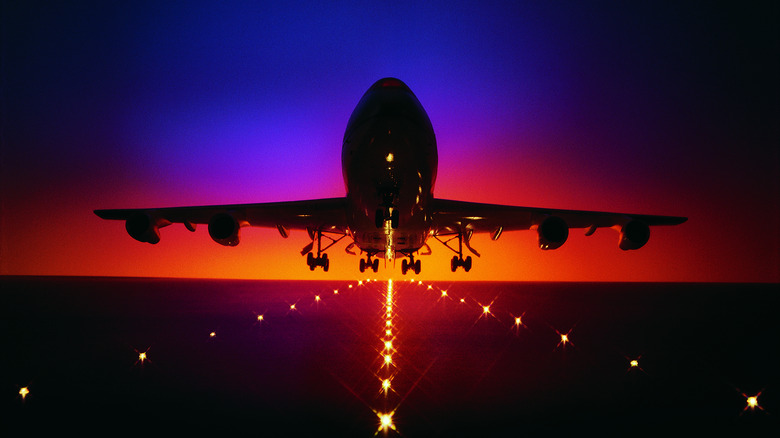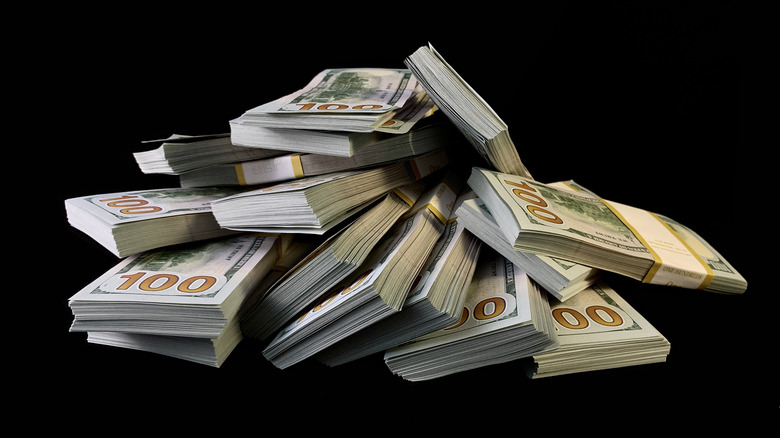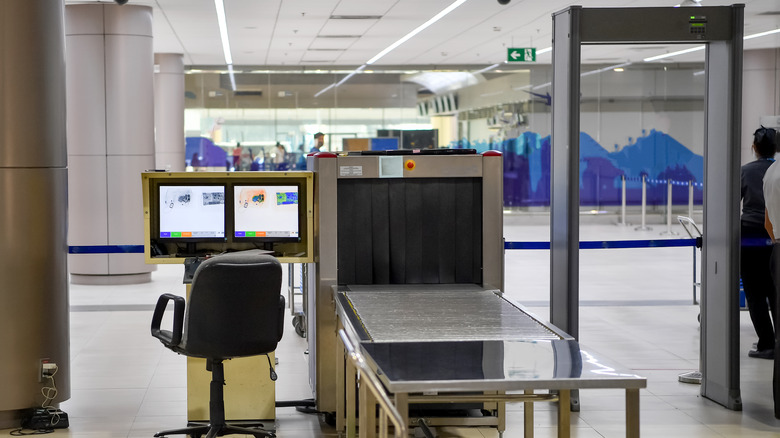Arthur Barkley: The Skyjacker Who Blamed His Crime On The IRS
Airplane hijackings were not uncommon back in the 1960s up to the 1970s. In fact, as noted by Smithsonian Magazine, a hijacking occurred once every five days on average at that time. Airport and airline safety was lax back then. Passengers didn't have to go through security, luggage contents weren't inspected, and proper identification and tickets weren't checked before boarding the plane. It was an effortless process for travelers, but it also made it easier for people with nefarious intentions to hijack planes without much difficulty.
According to Vox, over 130 airplanes were hijacked between 1968 and 1972 in the U.S. alone, and in some instances, more than one hijacking happened in one day. Brendan I. Koerner, the author of the book "The Skies Belong to Us," called that time the "golden age of hijacking." Most of the hijackers in the '60s demanded to be brought to different locations, such as Cuba and other countries or states, but in the '70s, hijackers started asking for money. Hijackings went on for years, and airlines gave in to the demands, as it was cheaper than adding security protocols that travelers had to go through.
Perhaps one of the most notorious hijackers was D.B. Cooper, who hijacked a plane in 1971 and demanded $200,000. He was able to escape with the money by jumping off the plane with a parachute, and the case remains unsolved to this day (via the FBI). Before Cooper, however, was the hijacking by Arthur Gates Barkley in 1971.
The hijacking of Trans World Airlines Flight 486
Arthur Gates Barkley was a World War II veteran who worked as a bakery truck driver in Phoenix, Arizona. However, he was let go from his job in 1963 after being accused of harassment, as reported by Slate. Years after losing his job, Barkley became embroiled in a dispute with the IRS, claiming that the agency owed him $471.78 in back taxes because of wrong calculations on his earnings. He brought his case all the way up to the Supreme Court but was unsuccessful in having his case heard.
On June 4, 1970, 49-year-old Barkley bid his wife goodbye at the airport and said, "I'm going to settle the tax case today." He boarded TWA Flight 486 and about 30 minutes into the flight, Barkley headed to the cockpit armed with a razor, a gun, and a can of gasoline. He told the pilot his demand: $100 million from the Supreme Court, or else he would set fire to the passengers. The request wasn't expected; before Barkley, hijackers only demanded being flown to a specific location. According to Time, Barkley forced the pilot to land at Dulles International Airport where he would collect the money. However, two banks near the airport only had $100,750 in cash, which another pilot carried into the plane when it landed. Barkley was disgruntled when he saw that the amount was far less than what he demanded.
Arthur Gates Barkley was apprehended immediately
TWA Flight 486 took off from Dulles International Airport and curled the area for a couple of hours. Meanwhile, the passengers weren't aware that a hijacking was taking place; they were told they had to land due to the weather. However, they soon realized that they were being hijacked and started speculating about where they would be headed (via Time). Barkley, intent on getting $100 million, gave the airline some more time to raise the money while spitting out threats against the lives of all those in the plane. It was then that TWA got help from the FBI.
The second time the plane landed at Dulles International Airport, the authorities were prepared. The bags that were prepared for Barkley contained fake money, and authorities didn't want him to discover that fact while the plane was in flight. The plane's tires were shot to prevent it from taking off. As reported by The New York Times, the pilots jumped on Barkley as FBI agents headed into the cockpit. Passengers immediately disembarked through the emergency exits. Barkley shot his gun and hit one of the pilots. Fortunately, the pilot survived after undergoing surgery. The hijacker was shot in the hand and was apprehended. All 51 passengers were unharmed.
What happened to Arthur Gates Barkley?
Arthur Gates Barkley's wife, Sue, told The Windsor Star that she wasn't aware that her husband had a plan to hijack the plane when she bid her goodbye at the airport. Sue insisted that Arthur "believes in his country and the Constitution" but may have been pushed to do the extreme after the Supreme Court refused to hear his issue with the IRS. "He was trying to help us but he made it worse," she stated. She further noted that Arthur had been experiencing bad headaches since a concussion he got after an accident years prior, and he hijacked the plane to bring attention to his case. As reported by Slate, Barkley was found unfit to stand trial and was confined in a psychiatric facility.
On July 17, 1970, about a month after Barkley's hijacking, the first airport screening system was used at the New Orleans International Airport (via Smithsonian Magazine). The screening was done with a magnetometer to allow security to detect items made of metal, such as knives and guns. Today, pieces of luggage — both carry-on and check-in — are carefully inspected. Passengers go through pat downs and advanced screening technology is utilized to ensure safety. Identities of individuals are checked, and some flights have an air marshal to protect passengers and crew members against criminal and terrorist attacks aboard a plane.



